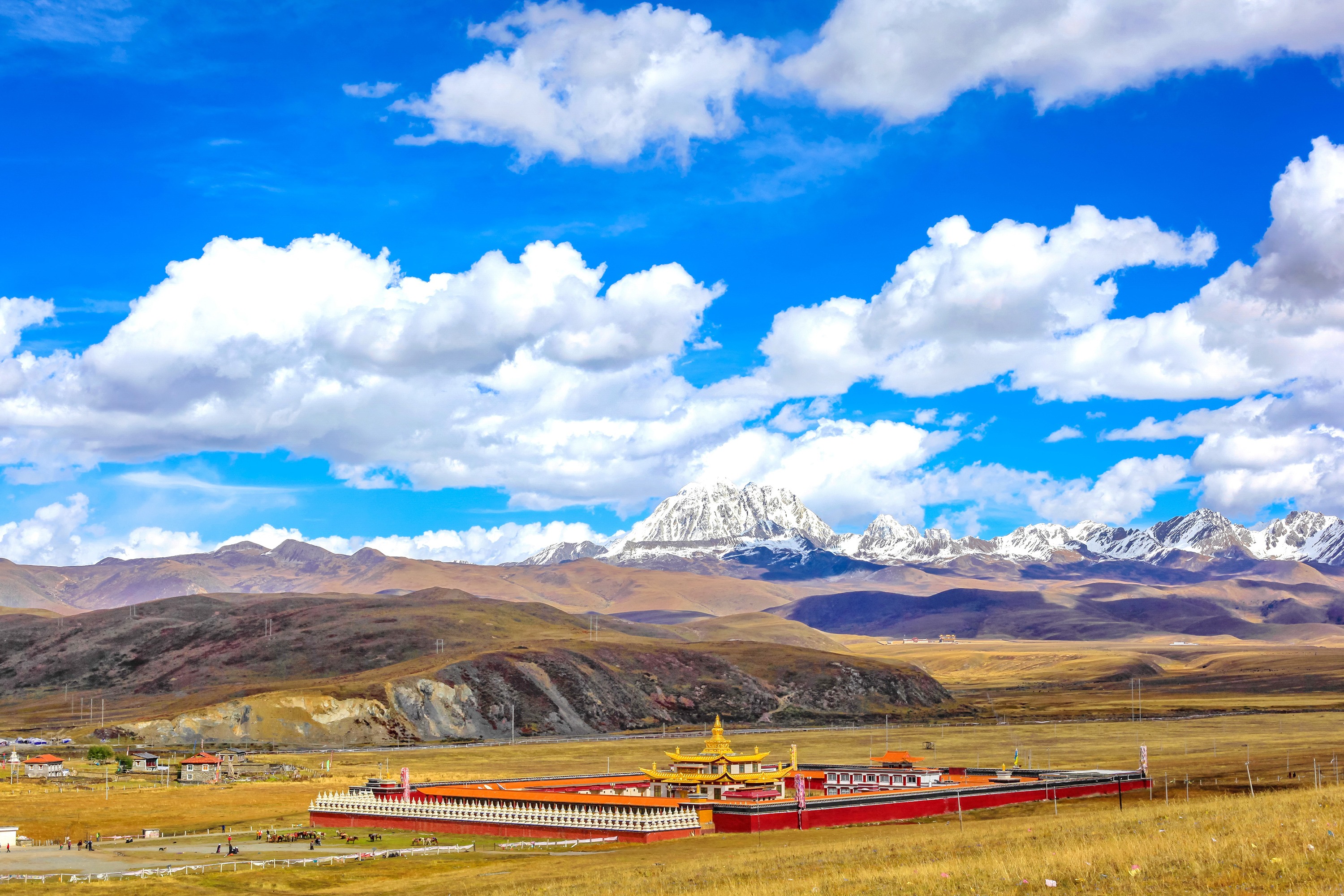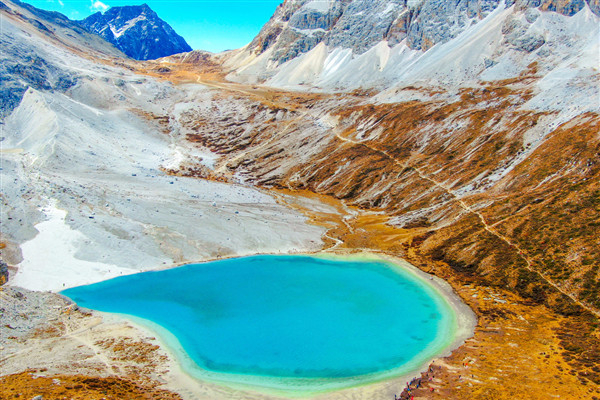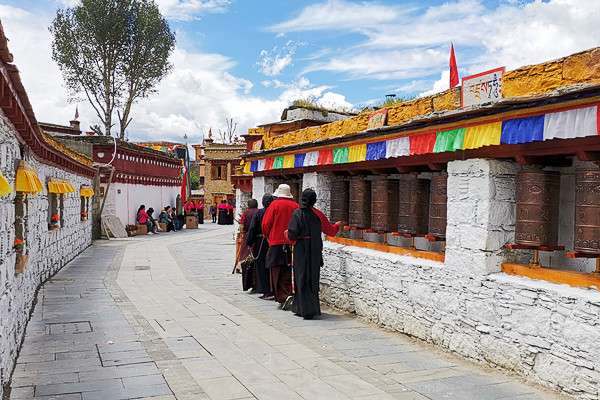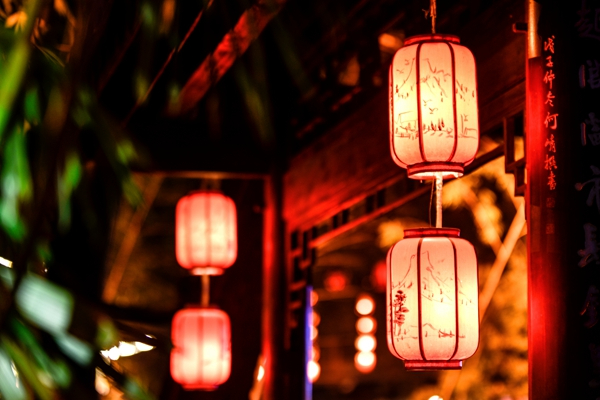[Meeting Ganzi in the Name of Mountain·Western Sichuan for 8 days and 7 nights] Xindu Bridge + Daocheng Yading + Luding Bridge + Jinli
Destination Place
Chengdu
Travel Days
8 days
Highlights
There are endless grasslands here and snow-capped mountains that run straight into the sky. The diverse beautiful scenery will make you dazzle
The unique Tibetan culture makes your travel even more mysterious
Daocheng Aden, the last place to check in Shangri-La is located
Itinerary
In the evening, we will arrive at Xinduqiao to check in. Tonight we have a special arrangement to taste a local soup pot meal. A hot pot with yak meat as the main ingredient and very distinctive Qinghai-Tibet ethnic characteristics.

zheduo mountain
Zheduo Mountain is located in Ganzi Prefecture, Sichuan Province, with an altitude of 4962 meters. It is the first pass in Kangba. Zheduo Mountain is also an important geographical dividing line. To the west is the plateau uplift area with the Yalong River, and to the right is the alpine canyon area with the Dadu River. The Dadu River Basin is in a transitional zone in terms of ethnicity and cultural forms, and there are mainly Tibetan branches known as "Jiarong". Its area can reach the North and South Jinchuan areas of Aba Prefecture in Sichuan Province. To the east of Zheduo Mountain is the mountainous area, and to the west of Zheduo Mountain is the eastern part of the Qinghai-Tibet Plateau, a real Tibetan area. "Zheduo" means bend in Tibetan, and it is written in Chinese as "Zheduo"
After that, we will go to [Tagong Grassland], which is the most famous grassland in Ganzi Prefecture. The Tagong Grassland is picturesque. On the Yinyin Grassland, a wide variety of wild flowers bloom competitively and are colorful. When tourists wander among the sea of flowers, they feel as if they are floating. On the morning when the dawn breaks, smoke curled from the black tents of herdsmen scattered on the grassland, and the fragrance of milk and tea wafted in from time to time. Here, you can view the Yala Snow Mountain from afar. Under the pyramidal Yala Snow Peak, there is a blue alpine lake-Yucuo. The lake water and the glacier are connected by ice waterfalls. The slopes around the lake are redwoods and rhododendrons, forming a beautiful natural picture.
In the evening, we will return to Xinduqiao to rest.

Moshi Park
China MOSHI PARK SCENIC Area is a national 4A-level tourist attraction, a geological science popularization center, one of the birthplaces of King Gesar, and one of the eight beauties of Daofu. The world's geological wonder, the only plateau stone forest landscape in China, and a diversified scenic spot integrating sightseeing, experience, scientific research and science popularization values. It is known as "the eighth most beautiful scenic avenue in China."

Tower and grassland
The Tagong Grassland is located in Tagong Town, Kangding City, Ganzi Tibetan Autonomous Prefecture, Sichuan Province. It is 113 kilometers away from the urban area of Kangding and has an altitude of 3730 meters. The Sichuan-Tibet Highway passes through it. With convenient transportation, it is the most famous grassland in Ganzi Prefecture. From Kangding, travel westward along the Sichuan-Tibet Line, cross Zheduo Mountain, cross Xindu Bridge, and then go north for 37.3 kilometers to Tagong Temple. The rivers, grasslands, forests, mountains, temples, Tibetan houses and buildings along the route constitute the scenic spot.

haizishan
Haizi Mountain is located between Litang County and Daocheng County, with an average altitude of 4500 meters. It is named for the distribution of more than 1000 haizi, large and small. There are no trees in the nature reserve, only countless types of granite and gravel stacked together, making it as wild as the surface of Mars. The Haizi lakes on the mountain are all relics of ancient glaciers, among which the sister lakes are the most famous. Under the snowy peaks, the two lakes are still beautiful.

kazila mountain
Kazila Mountain, 4718 meters above sea level. Due to the higher altitude, trees are even rarer, mainly alpine meadows. Looking at the mountains here, there are endless peaks, one layer farther away and one layer lighter in color, reaching the horizon. It's really like walking on the 'sky path'.

Gaoersi Mountain
Gaoersi Mountain is one of the scenic spots on National Highway 318, with an altitude of 4659 meters and is located between Xindu Bridge and Yajiang River. If Zheduo Mountain is the first pass in Kangba, then Gaoersi Mountain is the second pass in Kangba, and it is one of the best locations to view the Great Snow Mountains (Yala Mountain, Zheduo Mountain, and Gongga Mountain).

Jianziwan Mountain
Jianziwan Mountain, with an altitude of 4659 meters, is located west of Yajiang County and east of Shaluli Mountain. It is the watershed between the Yalong River and Jizhugou. It is named after the scissor-shaped bend formed by the post road running along the mountain.
Afterwards, we will return to Shangri-La Town to rest.

Inaki Ading scenic spot
Daocheng Yading Scenic Area is located in the southern part of Ganzi Tibetan Autonomous Prefecture, Sichuan, located in the eastern part of the famous Qinghai-Tibet Plateau, in the middle of the Hengji Mountains, in the southeast, adjacent counties in the west and Zhongdian County in Yunnan Province, and connected to Litang County in the north, covering an area of 7323 square kilometers.

Inaki Ading Jane Zhuhai
Daocheng Aden Pearl Sea is called "Zhuomalacuo" in Tibetan. It is a sea formed by the melted snow of Xiannairi. It is also called "Pearl Sea" or "Tara Sea". It is said that it is the soul of the white Tara on the left side of Xiannairi. Lake. Zhuomalacuo is about 4100 meters above sea level and covers an area of about 0.75 hectares. A long time ago, it used to be a large lake at the foot of Xian Nairi. Later, because the bank burst, the lake became smaller, leaving only the present Xiaohaizi. The Pearl Sea is like an emerald inlaid on a lotus throne. The blue waves ripple, and the sparkling waves reveal infinite beauty. Around the lake, green trees are like screens. In spring, azaleas are in full bloom by the lake. In autumn, the layers of forests are dyed, and the blue waves reflect the colorful world, which is dazzling. It takes about half an hour to reach the Pearl Sea from Chonggu Temple. This is an ideal place to take the reflection of the sun.

Chong Gusi
Chonggu Temple (3880 meters) is located at the foot of Xiannairi Snow Peak. The temple was seriously damaged, with ruins and broken walls, and the age of the temple's construction cannot be determined. Chonggu Temple belongs to Gongga Langjiling Temple. Genge Living Buddha sent Zaba to recite scriptures and praise Buddha here, and clay sculptures of Sakyamuni are provided in the small scripture hall. Chonggu Temple occupies the best geographical location in the Aden Nature Reserve. Standing in front of Chonggu Temple, with an almost exaggerated blue sky above your head and green and yellow grassland at your feet. In the distance is a snowy mountain that has never changed for thousands of years, and behind you is A canyon that has been sleeping for thousands of years. Chonggu Temple is like a gate to heaven, feeling very close to the world of God. Here, any tourist or novice photographer may be able to take photos of close to a professional level.
Afterwards, we will come to [Letong Ancient Town], which is an experiential ancient town of Tibetan folk culture that focuses on the historical and cultural charm of Litang. The Tibetan area, which is composed of more than 4000 households in 13 Tibetan villages, is the most concentrated and has the largest scale. In addition, Letong Ancient Town is also the only characteristic cultural town in the country that relies on Tsangyang Gyatso to create a lifelong attraction for Tsangyang Gyatso.
In the evening, we will return to Xinduqiao to rest.

Changqingchun Keer Temple
Changqingchun Keer Temple is located in Litang County, Ganzi Prefecture, Sichuan. It is also known as Litang Temple. It is the largest temple of the Gelug Sect in the Kangba area. It was built under the supervision of the Third King Sonangjia Cuo in 1580. Long Youth Cole is Tibetan, meaning: Maitreya Buddha Falun. There is a saying in Tibetan Buddhism that there are three major temples in Lhasa on the top, Andotar Temple on the bottom, and Litang Changqing Kerr Temple in the middle. This shows its status.

Letong Ancient Town
Letong Ancient Town·Qianhu Tibetan Village Tourist Scenic Area is located in the middle and Laocheng District city of Litang County. The scenic area contains the former residence of the Seventh Dalai Lama, which has a history of more than 400 years, the former residence and exhibition hall of the famous temple Labuleng Temple (Xiahe, Gansu). The former residence and exhibition hall of the fifth century Jiamuyang and the patriotic general General Huang Zhengqing; there are 13 Tibetan villages with more than 4000 households, which is the largest Tibetan village community in China; In the scenic area, there is also Changqing Kerr Temple, the largest Gelug Sect (Yellow Religion) temple in Kham District, built in 1580 AD.

Maoya Grassland
The Maoya Prairie is located to the west of Litang County, surrounded by mountains. This alpine grassland in western Sichuan stretches for dozens of kilometers along the G318 National Highway and extends all the way to the foot of Haizi Mountain. The Wuliang River passes through the grassland, and tributaries nourish countless swamps and wetlands. In summer, cattle and sheep flock outside the yurts, and waterbirds inhabit the river, making it a picturesque sight.
In the evening, we will return to the hotel to rest.

Jinli Street Street
Jinli Ancient Street is a well-known commercial pedestrian street in Chengdu. The ancient street is dotted with green tiles, and the blue stone road winds forward. Shops on both sides of the street are filled with many local characteristics, such as handmade leather bags, colorful cloth lanterns, etc., and there are also many old Chengdu craftsmen who make sugar blowing paintings and dough kneading people.

Luding Bridge
Luding Bridge is a masterpiece of ancient bridge architecture in China. It is also known as the Tiesuo Bridge and is located on the Dadu River in western Sichuan Province of China. It is said that after Emperor Kangxi unified China, he built this bridge with royal approval in order to strengthen cultural and economic exchanges between Sichuan and Tibet, and erected a royal plaque at the bridge head. On May 29, 1935, the Long March of the China Workers and Peasants Red Army passed here. The commando team led by 22 warriors, braving the enemy's bullets, crawled forward on the iron chain bridge and eliminated the bridgehead guards in one fell swoop.















